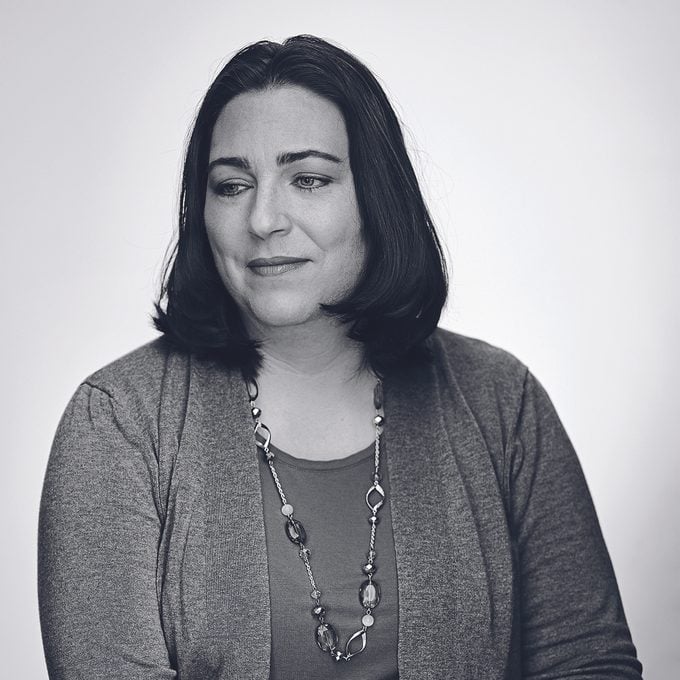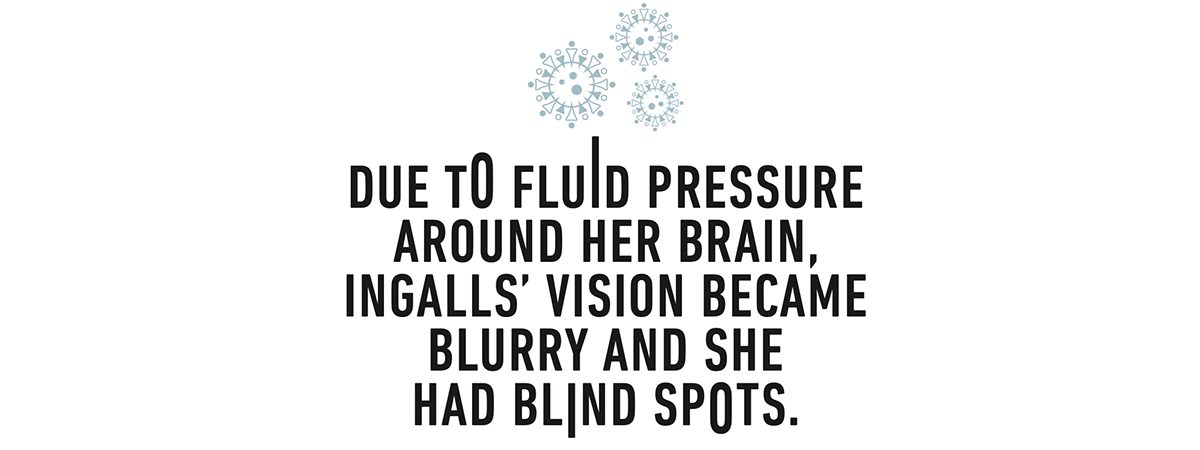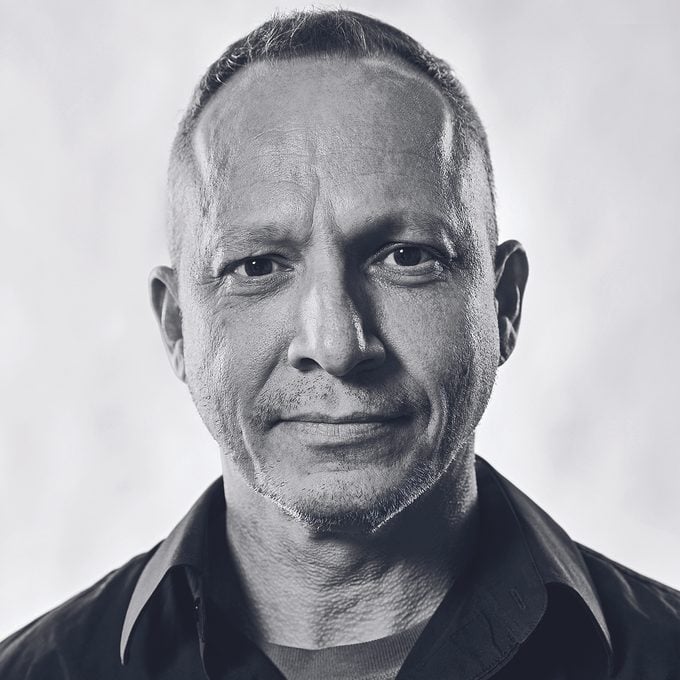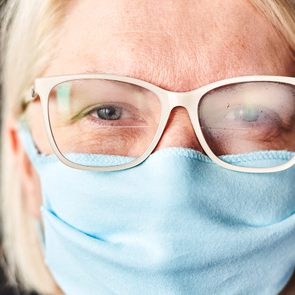What It’s Like Living With Long COVID
More than two years into the pandemic, some patients’ symptoms aren’t going away. While experts hunt for treatments, some people have taken matters into their own hands.

Shari Ingalls counted herself lucky to make it through most of 2020 without catching COVID-19. She worked at a Calgary hospital as a labour and delivery nurse, looking after pregnant women. A married, 43-year-old mom to three school-aged kids, she was healthy and fit, visiting the gym several times a week and routinely cycling the 11 kilometres to and from work. Then, in the early hours of December 14, during a night shift, she was suddenly gripped by aches and chills. “I wiped down everything I’d touched with disinfectant, went home and rolled into bed,” she says. A PCR test later that day confirmed that she had COVID-19.
Ingalls says her symptoms felt like the worst flu she’d ever had, but she expected they’d resolve in a week or so. Instead, after two weeks, her heart was still racing, she easily became short of breath, and pain radiated through her chest to her left shoulder. She couldn’t keep her balance while standing in the shower. By early January, the chest pain was no better, and with a family history of cardiac trouble, Ingalls knew she couldn’t leave it unaddressed. She went to the ER, but her heart tests were normal. The physician told her it was probably anxiety.
Despite feeling awful, Ingalls returned to her job in mid-January. “I thought I just had to work through it,” she says. Yet even after reducing her shifts, she was exhausted. Her head ached daily. Her heart rate shot up to 140 beats a minute just from bending over to put on stockings. In the evenings, her husband and children prepared food for her, but she sometimes struggled to eat because certain meals smelled to her like rotten garlic or burned plastic. After, she’d take pain relievers and sleep for 15 hours.
Ingalls kept waiting to get better, but it didn’t happen. Her doctor assured her that a resting heart rate of 80 was fine, but Ingalls, whose previous normal was 60, felt frustrated instead of convinced. Desperate, she found a Facebook group called Long COVID Canada for people whose symptoms persist well after a COVID infection. After learning more about it, in March 2021, Ingalls asked her doctor for a referral to a Calgary long-COVID clinic.

Also known as post-COVID syndrome or long-haul COVID, this new disorder is described by the World Health Organization as an illness that follows an infection by at least three months, is long-lasting and can’t be otherwise explained. Fatigue, shortness of breath and “brain fog”—mental function that is so sluggish, it’s a challenge to concentrate or complete tasks—are typical, but a paper published in The Lancet last year counted 203 symptoms, often coming and going, that could be attributed to the condition.
Long COVID caught everyone—including medical and scientific experts—by surprise, especially since it often occurs in people who never needed urgent medical care for their initial infection. We’ve known for decades that patients who are severely ill with a respiratory disease such as pneumonia can take months or years to recover from lung injury or the trauma of ICU care. But it turns out that there are numerous others who had COVID without those complications, who nevertheless seem to experience prolonged problems.
“We never expected those who weren’t hospitalized with COVID to still be unwell after six months,” says Dr. Angela Cheung, a specialist in internal medicine. She’s co-lead of a research consortium called CANCOV that’s coordinated by Toronto’s University Health Network to try to understand long COVID.
Estimates of the number of patients affected by the condition vary, but recent reports suggest that at least a quarter of people are still sick one month after getting COVID, and at least 10 per cent have symptoms at the three-month mark. Some studies have pegged it at over 40 per cent, but even if it’s just 10 per cent, that would mean there are more than 300,000 Canadians who, like Ingalls, didn’t bounce back. They live with pain, dizziness and fatigue. Many of them are unable to work or cook for themselves and are too unwell to spend time with family and friends.
And we’re far from understanding this disorder, let alone curing it. “Unfortunately, a lot of patients will say, ‘I’ve done a battery of tests, I’ve seen numerous specialists, and everything’s come back normal,’” says Dr. Emilia Liana Falcone, an infectious diseases specialist at the head of the Montreal Clinical Research Institute (IRCM) Post-COVID-19 Research Clinic, which opened its doors in February of last year.
Since we don’t yet have a test for long COVID, it adds to its elusiveness, making it similar to conditions such as chronic fatigue syndrome, which are only diagnosed after other problems are ruled out. While Falcone treats patients, she also studies their blood for clues that might predispose them to developing long COVID. She would love to find some kind of biomarker that could support an accurate diagnosis. For one thing, “It would help patients who are faced with doubt from their work colleagues or family members,” she says.

Clinics designed to treat patients with long COVID began opening up in Canada in early 2021, but more than a year later, there are still only about 20, scattered in a few centres across the country. Unfortunately, Shari Ingalls was rejected by the Calgary long-COVID clinic to which her doctor referred her. Before November 2021, it only accepted patients with lingering lung symptoms, and Ingalls hadn’t had any.
With few other treatment options available to her, she decided to help herself. She signed up for an online long-COVID program organized by Calgary’s Synaptic Neuro Rehabilitation Centre, and learned how to pace her energy to avoid crashes. In the summer, Ingalls went down to two four-hour shifts a week at work, but it was still too much. Since she couldn’t stand up for long, her duties had to be modified. She could no longer help women in labour, and wearing PPE felt uncomfortably hot.
“I had suddenly developed uncontrollable sweating. I had to wear scrub caps to absorb it, or it would be running down my face,” she says. The worst was how she’d feel afterwards, so depleted that she worried she had caught another COVID infection—but multiple tests showed she had not. By fall, she was on full leave.
Then, last December, she was alarmed to notice that her vision was blurry. “I had to squint to read ingredient lists, and I had blind spots,” she says. “Within a couple of weeks, those blind spots got bigger. Dark curtains started going across my vision.”
A neurologist discovered that the fluid pressure around her brain was high, causing her optic nerves to swell. Medication has helped to reduce the fluid and ease some of the vision distortion, but Ingalls can no longer drive. She’s lucky to have workers’ compensation, but she misses her job.
Meanwhile, the race to understand long COVID has ramped up in Canada. The federal government has spent more than $300 million on COVID-related research to date and committed $20 million in its 2022 budget to study the impact of COVID and long COVID on health-care systems.

For Manali Mukherjee, an immunologist and assistant professor at McMaster University who is trying to unravel the mysteries of the condition, it’s personal. She herself has had brain fog, dizziness and headaches ever since her January 2021 infection. Now she’s studying other people with this condition. “Everyone’s immune system is unique in how they respond to a virus, how they tackle a virus and how they recover,” she says. Long-COVID symptoms strongly suggest a dysregulated immune system, like an autoimmune disease in which rogue antibodies attack the body.
One thing Mukherjee has learned after the first 12 months of data: “There are a lot of people who do get better.” That’s consistent with other studies that have shown recovery in some patients at three months, others at six months, still more after a year. But many people, like Mukherjee, are continuing to cope with long COVID after more than 12 months. “I have a feeling there is going to be a small subset who will get a diagnosis for life.”
Researchers are also collecting clues about who is most at risk. “We see more women with long COVID,” says Cheung, but she also points out that the number may be affected by the fact that men are more likely to have died from the acute infection. Most people with the condition are between 40 and 60, although anyone at any age can have it. A study published earlier this year in Cell identified biological factors that may contribute to a risk of long COVID, including certain types of auto-antibodies that attack our own immune system instead of fighting germs, type 2 diabetes and a reactivation of the Epstein-Barr virus, which virtually all of us are exposed to before we reach 40.
Maybe certain people don’t produce antibodies the way they should: a 2022 study in Nature Communications found that people with long COVID have unexpectedly low levels of the antibodies IgM and IgG at times when they should be high to fight infection. Asthma was also cited as a risk factor. Ingalls, for one, was hospitalized for asthma as a teenager.

These findings show that we’re making progress. Plus we’ve discovered a major prevention tool that is already in our hands. Studies are showing that vaccination may reduce the likelihood of long COVID by about 50 per cent. “It’s encouraging, but it doesn’t bring it down to zero,” notes Falcone.
Joy Keil of Prince George, B.C., was doubly vaccinated when she caught COVID last October. More than a month after her infection, the 38-year-old was still so weak and dizzy that at one point she had to crawl up the stairs in her home. She hasn’t returned to her job as a nurse in administration. Her vocal cords no longer function normally, making her too hoarse to read bedtime stories to her two young children. “You feel like a broken human,” she says. “Sometimes my daughter will start crying and say she just wishes that mommy would feel better. That’s really hard to take.”
Keil says her friends seemed surprised that she was sick for so long, constantly asking if she was any better. “It felt like, ‘You should be feeling better. What’s wrong with you?’”
But her condition was more readily recognized by physicians who’d seen many long-COVID patients in the past year and a half, and by February, Keil was accepted into a Vancouver long-COVID clinic. Today, these specialized clinics are typically multidisciplinary, with several types of health care professionals to provide different therapies as needed. We don’t yet have a pill for long COVID, but clinicians can focus on treating specific symptoms and complications—for instance, giving iron or other supplements if there’s a deficiency, pain relievers for migraines or inhalers for respiratory symptoms. They also teach patients to conserve their energy—using a points system, they track what they spend on different activities—and boost nutrition. Keil’s shortness of breath and frequent fevers have improved since she began attending the clinic.

The importance of having peer support was Susie Goulding’s motivation for starting the COVID Long-Haulers Support Group Canada in June of 2020. She was three months post-COVID and dealing with dozens of persistent symptoms. “Everybody thought either you got deathly ill or you got better in a couple of weeks,” she says. “Long haulers weren’t on the radar. People were saying, ‘This is all in your head.’”
Today, the group has around 17,000 members. Goulding partners with multiple research teams, helping recruit participants for studies. What’s most gratifying, though, is knowing that she’s helping individuals who are grappling with this distressing condition. “New members are grateful—it’s this huge wave of relief,” she says. “They were so alone, and now they’ve found a community that understands what they’re going through.”
Goulding is convinced that they’ve saved lives by occasionally calling for police to check on someone’s well-being, or reaching out to a member in distress. A 2021 article in the medical journal QJM suggested an elevated risk of suicide among those living with long COVID. Goulding herself helped a man who’d ended up in a hospital’s psychiatric ward, frequently calling and messaging him to ensure he felt supported. “People come to the end of their rope. We do whatever it takes to get them through a crisis,” she says.
Before he caught COVID, group member Kirk Brant, a 52-year-old Indigenous fine artist in Ottawa, was accustomed to being outdoors, hunting, hiking and harvesting wild plants in the bush. Suddenly he was knocked flat. At one point, he says, “My breathing was so laboured that it was a conscious effort to suck in air.”
Over the next seven months, Brant’s energy was up and down. He remembers a night spent curled up on the floor in agony. Tremors made it impossible to pick up a cup of coffee, let alone hold a paintbrush steady. Brant visited walk-in clinics and called the province’s telemedicine service, but no one seemed to understand what was wrong. “I would describe the symptoms to a doctor, and their response was, ‘There’s nothing I can do for you,’” he recalls. “It was horrible. I felt forgotten.”
By the fall of 2020, Brant knew he probably had long COVID and was relying heavily on advice posted online. “I wasn’t getting any medical help, so I’m thankful for that group.”
Last year, Brant signed up with a family doctor through an Indigenous health centre and finally received a referral to an immunologist, who in turn sent him to a long-COVID clinic. There, he sees a physiotherapist for light exercise designed to build his strength back while avoiding a relapse of his symptoms. He also meets with a psychologist, a dietitian and an occupational therapist. Some of his symptoms, including brain fog and tremors, are better, but not gone.

More resources for long-COVID patients across Canada are needed to fill the growing need. The Province of Quebec has been a frontrunner, announcing $20.5 million for long-COVID clinics and research in its latest budget, released in March. Advocates are lobbying politicians and circulating petitions for additional commitments. “The U.S. has given over a billion. Canada has been really slow to acknowledge long COVID,” says Goulding, who wants federal recognition that this is disabling people. “Without a diagnosis, many long haulers have no access to health benefits or home care.”
There’s a strong chance that these supports will be required for years to come. More than two years after long COVID first emerged, some people are beginning to suspect that their condition might be permanent. “I would love a full recovery, but I don’t know if that’s possible, and doctors can’t tell me if that’s possible,” says Brant.
“We’re learning more as it’s evolving,” Mukherjee says. Even if there are some people who end up with a lifelong condition, she doesn’t expect it to be as debilitating as, say, post-polio syndrome. “There will be ways of managing or curing symptoms. We’re medically advanced, and there are lots of people working on this globally.”
Experts hope one day there will be medications that target underlying causes. “There are a lot of investigations at the moment, and repurposing of existing drugs,” says Falcone. When certain approaches are shown to be effective, it’ll teach us more about what is causing long-COVID symptoms. If blood thinners make a difference to some people, it might suggest the presence of tiny clots. If probiotics help, it could support a theory that gut bacteria have been disrupted. “We just have to keep looking where others haven’t, and keep digging,” says Falcone.
Cheung, who is now the principal investigator of a new Canada-wide trial that aims to assess all kinds of treatments at once, is actively recruiting participants. “We’re open to testing any intervention, whether it’s a drug, a supplement or a different type of therapy. Our team is working hard to find solutions,” she says.
In the meantime, Ingalls wants people to understand the very real consequences of COVID. “You could be someone with many illnesses already, or you could be a cyclist like me,” she says. “This is the great equalizer.”
Next, check out 20 symptoms you should never ignore.






